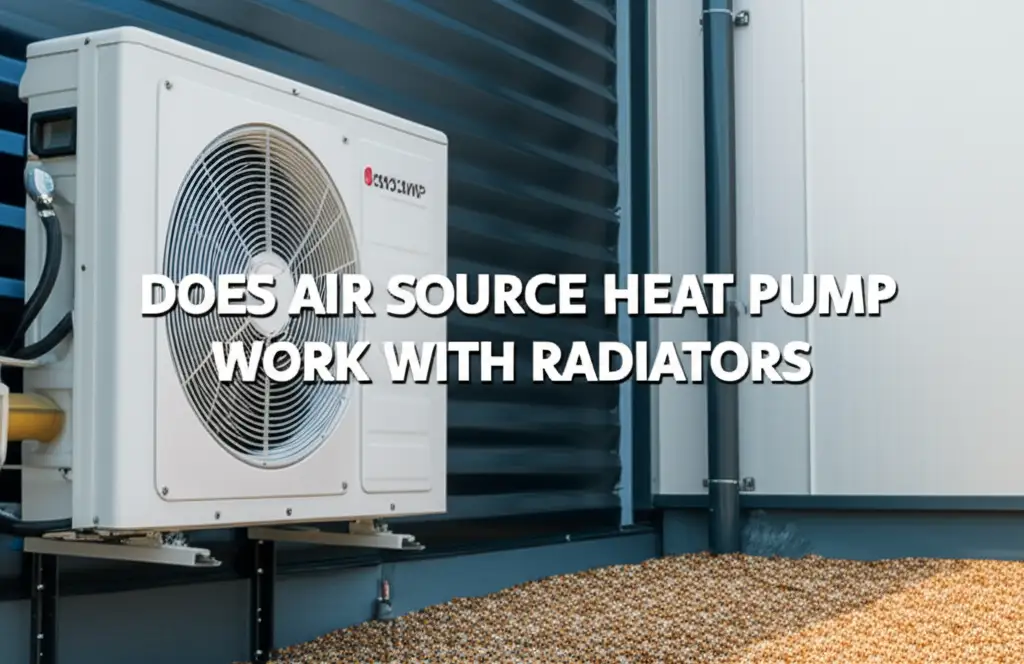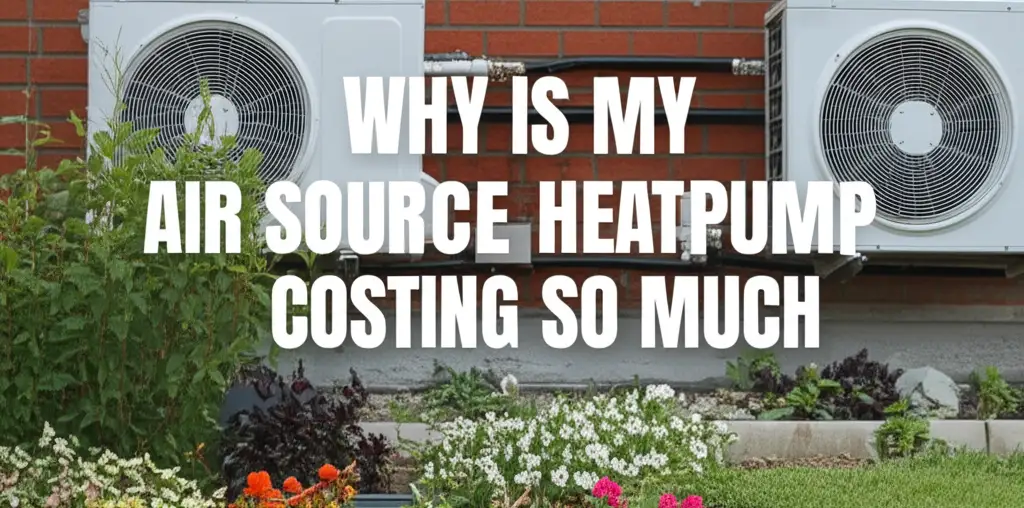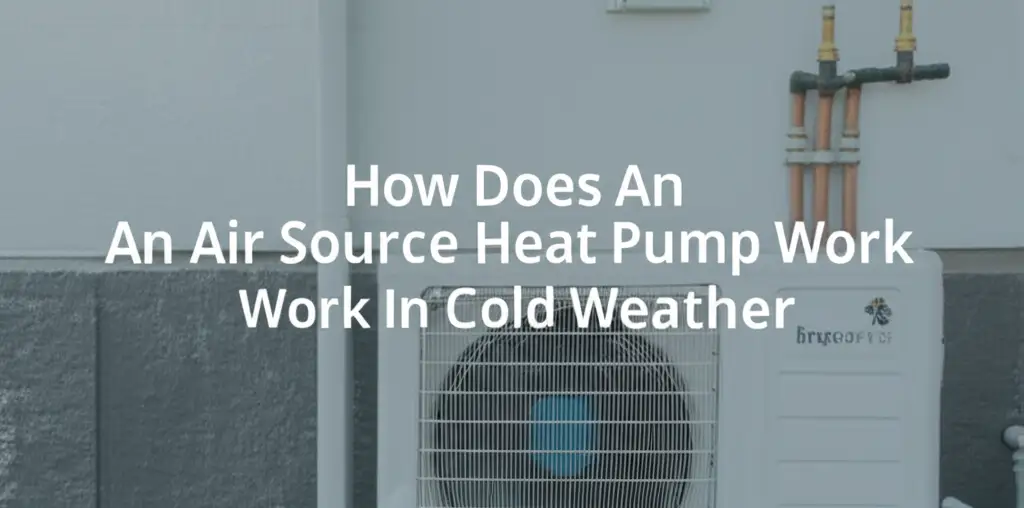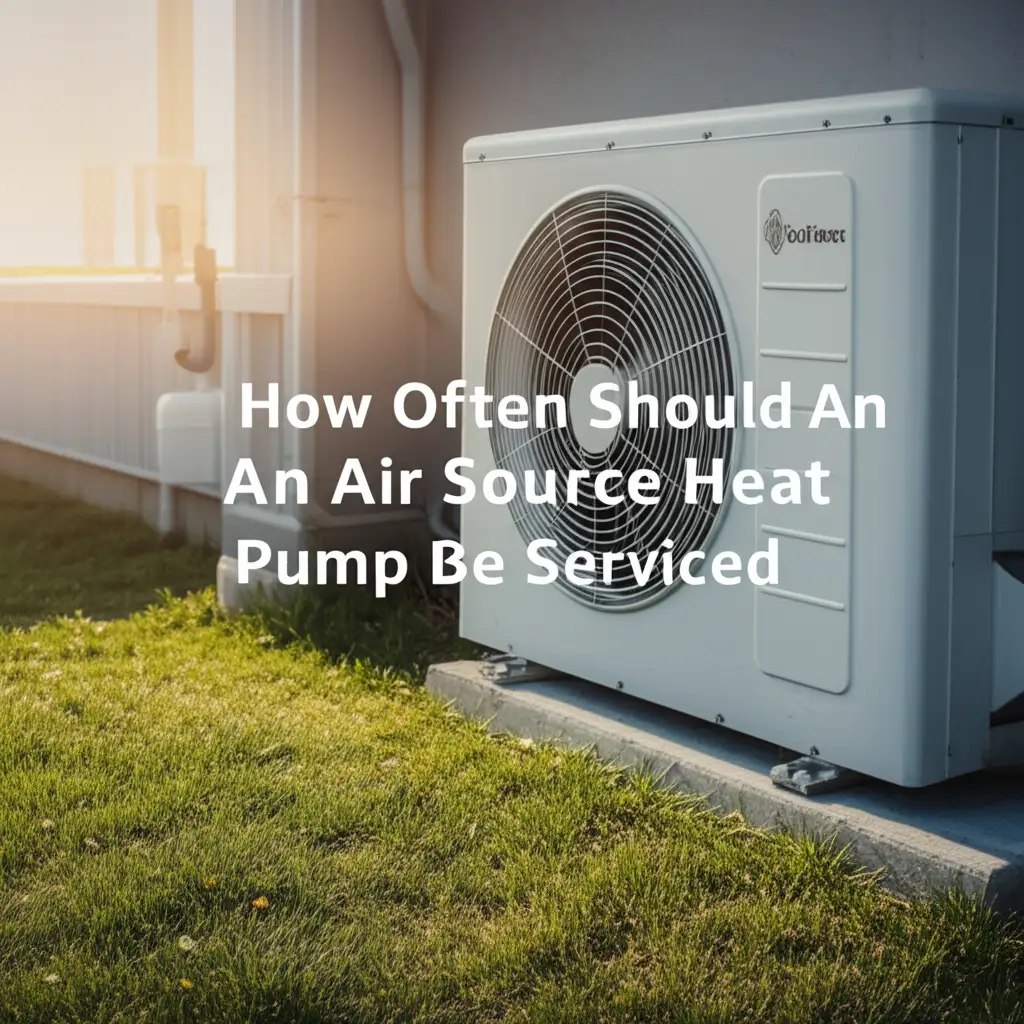· Kianna Connelly · Heat Pumps · 16 min read
How To Make Air Source Heat Pump More Efficient
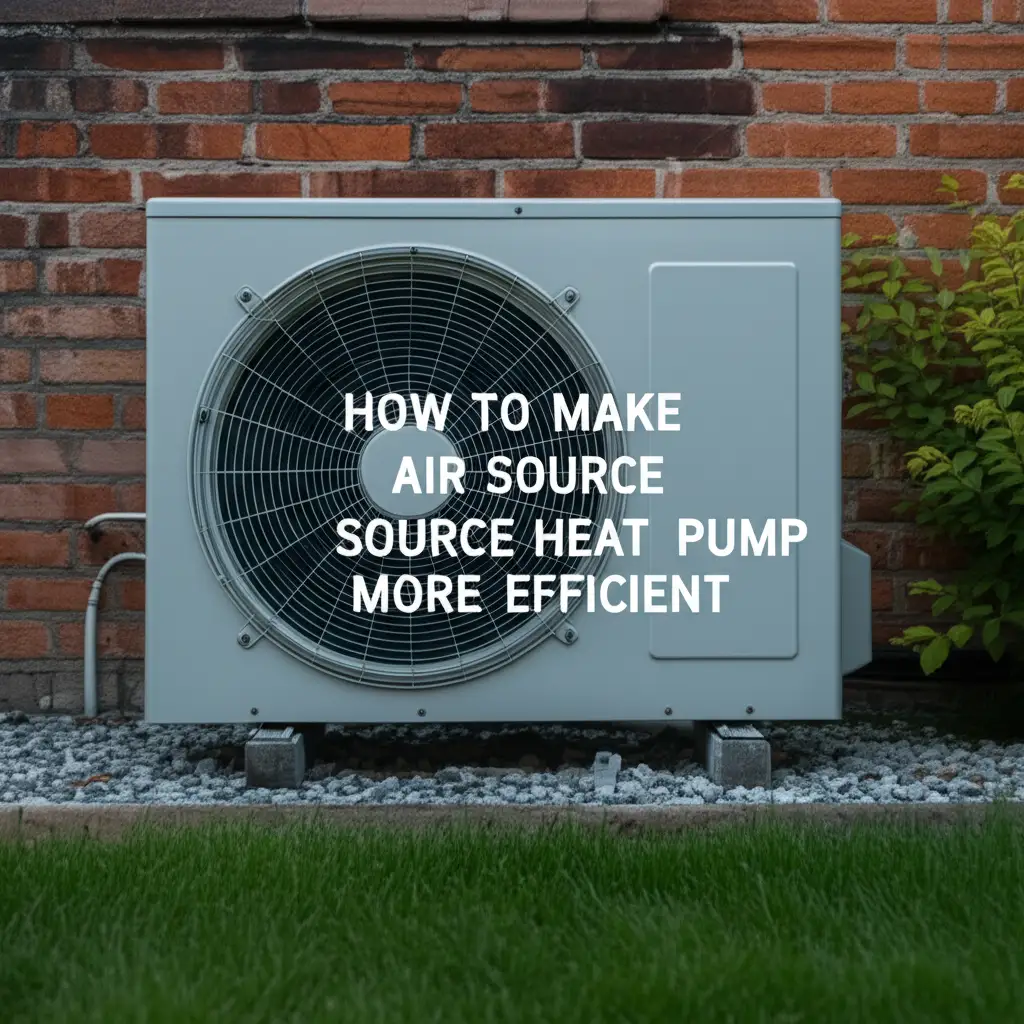
How To Make Your Air Source Heat Pump More Efficient
Are you looking to get more out of your air source heat pump? I understand. We all want our heating systems to run as well as possible. An air source heat pump is a fantastic investment for comfort and lower bills. Getting yours to operate at peak efficiency is simpler than you might think. We will explore practical steps to make your air source heat pump more efficient. This helps you save money and keep your home warm.
Takeaway
- Regular Maintenance: Keep your heat pump clean and serviced.
- Optimize Home Insulation: Stop heat from escaping your house.
- Smart Controls: Use thermostats for better temperature management.
- Correct Sizing: Ensure your heat pump fits your home’s needs.
- Address Issues Quickly: Fix problems like freezing or strange noises.
Clear, Concise Answer
You can make an air source heat pump more efficient by maintaining it regularly, ensuring your home is well-insulated, using smart thermostats, and verifying its correct size. Addressing common issues and optimizing heat distribution also significantly improves performance and reduces running costs.
Understanding Your Air Source Heat Pump’s Core Operation
I find it helpful to know how things work. Your air source heat pump moves heat, rather than creating it. It extracts heat from the outside air, even when it is cold, and transfers it inside. In warmer months, it can reverse the process to cool your home. This heat transfer method makes heat pumps very efficient.
The efficiency of your system depends on several factors. Outdoor temperature plays a big part. The design of your heating system also matters. If you want to design an air source heat pump system, consider this from the start. A well-designed system works better. Your home’s insulation and airtightness are important too. A leaky home will lose heat quickly. This forces your heat pump to work harder. Keeping these things in mind sets the stage for efficiency.
Your heat pump has different parts working together. The outdoor unit contains a fan and a coil. The indoor unit distributes the heat. Refrigerant circulates between them, absorbing and releasing heat. When any of these parts do not work correctly, efficiency drops. Regular checks can prevent this. Knowing the basics helps you understand how to improve its output. Deciding if an air source heat pump is right for me means considering these factors too.
We all want a system that runs smoothly. An air source heat pump saves energy compared to traditional heating. But even the best systems need care. You can gain more savings with simple actions. Many people do not realize how much small changes can help. These changes add up over time. They make a big difference to your energy bills.
Regular Maintenance: The Essential Step for ASHP Efficiency
Just like your car, your air source heat pump needs regular check-ups. This is perhaps the most important thing you can do. Good maintenance keeps your system running well. It also prevents small issues from becoming big, expensive problems. I recommend professional servicing at least once a year. This check should happen before the heating season begins.
A qualified technician will inspect various components. They clean coils and check refrigerant levels. They also look at electrical connections and fan motors. Sometimes, people wonder how often should an air source heat pump be serviced. Annual servicing is the standard. It helps catch issues early. It ensures your heat pump provides consistent, efficient heat.
Besides professional servicing, you have tasks to do yourself. One simple task is cleaning the outdoor unit. Leaves, dirt, and debris can block airflow. Blocked airflow makes your heat pump work harder. This uses more electricity. I always make sure the area around my outdoor unit is clear. You should also check the indoor filters regularly. Dirty filters restrict airflow. This reduces efficiency and can strain the system.
- Clean or replace filters: Do this monthly or as recommended by the manufacturer.
- Clear outdoor unit: Keep leaves, snow, and debris away from the unit.
- Inspect for blockages: Look for anything that might impede airflow to the outdoor unit.
- Schedule annual service: Get a professional check-up once a year.
Neglecting maintenance can lead to higher running costs. If you are wondering why is my air source heat pump costing so much, poor maintenance might be a reason. It is an investment in your comfort and your wallet. Simple maintenance makes a big difference. It extends the life of your unit too.
Optimizing Your Home’s Thermal Envelope
Your heat pump works inside your home’s thermal envelope. This is the barrier that separates conditioned air from outside air. A leaky home loses heat quickly. This means your heat pump has to work harder and longer. Improving your home’s insulation and sealing air leaks is a very effective strategy. It directly lowers your heat pump’s workload.
I think of my home as a giant thermos. The better it is sealed, the longer it keeps warm. Start by checking your attic insulation. Heat rises, so a poorly insulated attic lets a lot of heat escape. Adding more insulation here often offers a great return on investment. Walls and floors also need good insulation. You might consider professional insulation services for these areas.
Air sealing is equally important. Cracks around windows and doors let cold air in and warm air out. Use caulk and weatherstripping to seal these gaps. Check electrical outlets and light fixtures on exterior walls. These can also be sources of air leaks. Use foam gaskets behind outlet covers. Look for gaps where pipes or wires enter your home. Seal them with expanding foam or caulk.
- Attic Insulation: Ensure proper R-value for your climate.
- Wall and Floor Insulation: Improve as needed, especially in older homes.
- Window and Door Sealing: Apply caulk and weatherstripping.
- Seal Penetrations: Address gaps around pipes, wires, and outlets.
A well-sealed and insulated home holds heat better. This allows your air source heat pump to cycle less often. It maintains comfortable temperatures with less effort. This directly translates to lower energy bills. It also means your heat pump will last longer because it is not overworked. Improving your home’s envelope makes your heat pump naturally more efficient.
Smart Controls and Strategic Programming for Energy Savings
Modern technology helps us use energy more wisely. Smart thermostats and proper programming are key for air source heat pump efficiency. These devices allow you to manage your home’s temperature precisely. This avoids unnecessary heating when you are not home. It prevents your heat pump from running all the time.
I highly recommend investing in a smart thermostat. These thermostats learn your schedule. They can adjust temperatures automatically. Some even connect to your phone. This lets you control your heating from anywhere. For example, if you are curious about can you use Hive with air source heat pump, the answer is yes, many smart systems are compatible. They give you fine-tuned control.
Programming your thermostat is crucial. Set it lower when you are away or asleep. You do not need the house warm when nobody is there. Gradually increase the temperature before you return or wake up. Avoid drastic temperature changes. Your heat pump works by slowly raising the temperature. Large jumps in temperature force it to work very hard. This uses more energy.
- Install a Smart Thermostat: Gain precise control and scheduling.
- Set Schedules: Match heating to your daily routine.
- Use Away Modes: Lower temperature when the house is empty.
- Gradual Temperature Changes: Avoid large temperature swings.
Some people wonder does an air source heat pump run all the time. It often does, especially in colder weather. This is normal, as heat pumps extract heat slowly. However, smart controls ensure it runs only when needed. They optimize its operation for maximum efficiency. This strategy saves a lot of energy over a heating season.
Proper Sizing and System Design: Getting It Right from the Start
Before installation, correct sizing of your air source heat pump is essential. An undersized unit struggles to heat your home. It runs constantly and may not keep you warm enough. This leads to higher energy bills because it is always working at maximum capacity. An oversized unit is also inefficient. It cycles on and off too frequently. This causes wear and tear and wastes energy.
I learned that getting the right size involves calculations. A professional installer performs a “heat loss calculation.” This considers your home’s size, insulation levels, window types, and local climate. It determines the exact heating and cooling needs. This is a critical step. Do not let anyone skip it. It ensures your heat pump works efficiently from day one. You can read more on how to design an air source heat pump system for deeper insights.
System design also matters. This includes how the heat is distributed. Consider radiators versus underfloor heating. Underfloor heating generally works better with heat pumps. It uses lower water temperatures. Radiators can work, but sometimes need to be larger. Think about how the indoor units are placed. Proper placement ensures even heat distribution.
- Professional Heat Loss Calculation: Ensure accurate sizing.
- Avoid Undersizing: Prevents constant running and insufficient heat.
- Avoid Oversizing: Prevents short cycling and premature wear.
- Optimize Heat Distribution: Consider underfloor heating or larger radiators.
The initial cost of installation can be high. If you are concerned about how much does air source heat pump cost to install, remember that correct sizing prevents future headaches. It also maximizes your energy savings. A well-designed, correctly sized system is the foundation of an efficient heat pump. It delivers consistent comfort and lower bills.
Addressing Common Efficiency Issues and Troubleshooting
Even with good maintenance, problems can arise. Knowing common issues helps you act fast. This preserves your air source heat pump’s efficiency. One frequent concern is reduced heating output. This can happen for a few reasons.
Sometimes, air source heat pumps freeze up. This is a normal part of their operation in cold weather. They have a defrost cycle to manage this. However, excessive freezing could signal a problem. If your unit constantly freezes or does not defrost, it is losing efficiency. This might be due to low refrigerant or a faulty defrost sensor. You can find more about why does my air source heat pump freeze up for detailed solutions.
Another common issue is unusual noise. Rattling or grinding sounds mean something is wrong. It might be a loose fan or a motor problem. This reduces efficiency and can cause damage. Higher energy bills without a change in usage are also a red flag. If you are thinking, why is my air source heat pump costing so much, an underlying issue could be present.
- Reduced Heating Output: Check filters, outdoor unit for blockages.
- Excessive Freezing: Monitor defrost cycle, call a professional if it persists.
- Unusual Noises: Investigate source, often requires technician.
- High Energy Bills: Look for symptoms like constant running or poor heating.
Do not ignore these signs. Addressing them promptly saves energy and extends the life of your heat pump. Some issues, like dirty filters, you can fix yourself. Others, like refrigerant leaks, need a professional. Fixing problems quickly ensures your heat pump remains efficient. It helps you keep your heating costs down. It also ensures your home stays warm.
Maximizing Heat Distribution and System Output
Once your air source heat pump generates heat, you need to distribute it effectively. The way heat moves through your home impacts overall efficiency. Poor distribution means some rooms stay cold while others are too warm. This makes your heat pump work harder than needed.
Consider the heat emitters in your home. Air source heat pumps work best with low-temperature heating systems. Underfloor heating is ideal. It spreads heat evenly across a large surface. This means you feel comfortable at a lower ambient temperature. Large radiators are also a good option. If you have standard radiators, they might need to be bigger. This is to work effectively with the lower flow temperatures from a heat pump. You can check if you can use an air source heat pump with radiators to understand the compatibility.
Ensure all rooms receive adequate heat. Do not block radiators with furniture or curtains. This prevents heat from circulating. Keep internal doors open in areas you want to heat. If you use zone control, make sure it is set correctly for each area. This directs heat only where it is needed. This reduces wasted energy.
- Optimize Emitters: Use underfloor heating or appropriately sized radiators.
- Unblock Radiators: Keep furniture and curtains away from heat sources.
- Open Doors: Allow heat to flow freely between heated spaces.
- Use Zone Controls: Heat only occupied areas.
Improving heat distribution helps your heat pump run more efficiently. It maintains comfortable temperatures with less effort. This means lower energy usage and reduced bills. It also contributes to a more evenly heated home. A well-distributed heat means your heat pump does its job effectively.
Adapting Your ASHP for Winter Efficiency
Winter is when your air source heat pump faces its biggest challenge. Temperatures drop, and the unit works harder. There are specific steps you can take to make your heat pump more efficient in cold weather. This ensures it performs well even when it is freezing outside.
One key aspect is setting the right temperature. I recommend keeping your thermostat at a consistent, lower temperature. Do not turn the heat off completely when you leave. Allowing the temperature to drop too much forces the heat pump to work extra hard to recover. It is more efficient for it to maintain a steady temperature. If you want to know how to make heat pump more efficient in winter, this is a major point.
Check your outdoor unit for snow and ice buildup. While defrost cycles handle normal frost, heavy snow can block the unit. This impedes airflow and reduces efficiency. Gently clear any accumulated snow. Make sure the area around the unit remains free. Consider a small roof or cover if snow is common in your area. This protects the unit from direct snowfall. However, always ensure proper air circulation.
- Consistent Temperature: Maintain a steady, lower temperature.
- Clear Snow and Ice: Keep the outdoor unit free from heavy accumulation.
- Monitor Defrost Cycle: Ensure it is working correctly.
- Consider Supplemental Heating: For extreme cold snaps, a backup system can help prevent overworking the ASHP.
Your heat pump may run more often in winter. This is normal. It is designed to extract what little heat is available from cold air. Following these tips helps it do its job more effectively. It ensures you stay warm without seeing a huge spike in your energy bills. These small actions make a real difference during the coldest months.
Future-Proofing and Advanced Optimization Tips
Looking ahead, there are ways to enhance your air source heat pump’s efficiency even further. Thinking long-term helps you get the most value from your investment. Some of these involve system upgrades or integration with other technologies.
Consider integrating your heat pump with solar panels. Solar energy can power your heat pump. This makes your heating system almost carbon-neutral. It also dramatically reduces your electricity bills. Installing solar panels alongside an air source heat pump creates a powerful, efficient heating solution. This can be a significant step [towards] energy independence.
Regular monitoring of your energy usage helps you track efficiency. Many smart thermostats and energy monitors provide usage data. I find it useful to review this data periodically. It helps me spot trends or unusual spikes. This allows me to address problems quickly. If you notice a sudden increase in how much energy does air source heat pump use, it is time to investigate. This could point to a system fault or an efficiency issue.
- Solar Integration: Combine with solar panels for renewable power.
- Energy Monitoring: Track usage to identify efficiency trends.
- Demand-Side Management: Participate in utility programs for off-peak usage.
- Thermal Storage: Consider hot water tanks or buffer tanks for optimal energy use.
These advanced tips help you maximize savings. They also contribute to a greener home. Air source heat pumps are already efficient. But by taking these extra steps, you can achieve even greater performance. This ensures your home stays warm efficiently for many years.
FAQ Section
How cold can it get before my ASHP becomes inefficient?
Air source heat pumps can work efficiently down to very low temperatures, sometimes below -15°C (-5°F). Their efficiency (COP) does decrease as outdoor temperatures drop. However, modern heat pumps are designed to operate effectively in most winter climates. They have backup heating elements for extremely cold days.
Does turning my ASHP off and on save energy?
No, turning your air source heat pump completely off and on usually wastes energy. Heat pumps work best by maintaining a consistent temperature. They use more energy to recover from a large temperature drop. It is more efficient to set a lower, consistent temperature when you are away or asleep.
What’s the ideal temperature setting for an ASHP?
The ideal temperature setting for an air source heat pump varies by home and comfort preference. Generally, heat pumps are most efficient when set to lower flow temperatures. Many people find comfort around 19-21°C (66-70°F). Setting it consistently helps the heat pump run optimally.
How often should I clean my ASHP filters?
You should clean or replace your air source heat pump’s indoor unit filters monthly. Check them more often if you have pets or allergies. Dirty filters restrict airflow, forcing the heat pump to work harder. This reduces efficiency and can lead to higher electricity bills.
Can I improve my ASHP’s efficiency during extreme cold?
Yes, you can improve efficiency in extreme cold. Ensure your home is well-insulated and air-sealed. Keep the outdoor unit clear of snow and ice. Maintain a consistent indoor temperature to avoid recovery cycles. You can also temporarily adjust fan speeds or use a backup heat source if needed.
What role does hot water play in ASHP efficiency?
Your air source heat pump can also heat your domestic hot water. This dual function makes it highly efficient. Using a well-insulated hot water cylinder and setting the hot water temperature correctly optimizes this aspect. Schedule hot water production for off-peak electricity times if available.
Conclusion
Making your air source heat pump more efficient is a smart move for any homeowner. We have seen that a mix of regular maintenance, home improvements, and smart usage habits truly makes a difference. Keeping the system clean and clear ensures optimal airflow and heat transfer. Improving your home’s insulation and sealing air leaks reduces the workload on your heat pump. It holds the warmth inside better.
Using smart thermostats helps you control your heating precisely. This avoids wasted energy when heat is not needed. Ensuring your air source heat pump was sized correctly from the start is also crucial for long-term efficiency. Do not ignore common issues like freezing or unusual noises. Fixing these quickly prevents larger problems and maintains efficiency. Finally, optimizing heat distribution within your home ensures every bit of warmth is used effectively.
By following these strategies, you are not just saving money on energy bills. You are also extending the life of your heat pump. You are making your home more comfortable. I encourage you to take these steps today. Take control of your home’s heating efficiency. Enjoy a warmer home and lower costs.
- air source heat pump efficiency
- heat pump optimization
- energy saving tips
- home heating costs
- renewable energy


